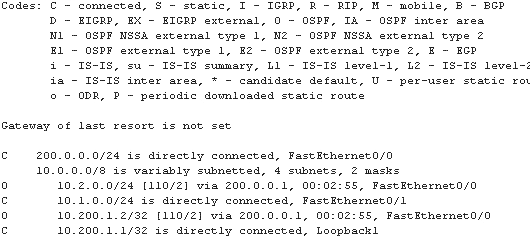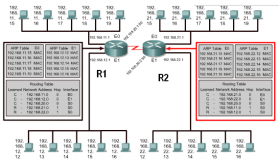You are using an out of date browser. It may not display this or other websites correctly.
You should upgrade or use an alternative browser.
You should upgrade or use an alternative browser.
Switch and Router Contents?
- Thread starter Eagle710
- Start date
First hit on google
http://www.cisco.com/warp/public/63/arch_1600_5406.shtml
Scroll down.
Notes
Router has brains switch does not. Totally different beasts.
That Cisco is top end, skip the PCMIA on a residential model.
Switch first google hit.
http://www.altera.com/products/ip/altera/images/aatb-morethan-ip.pdf
Hint- practice your googling.
Hint
http://www.altera.com/products/ip/altera/images/aatb-morethan-ip.pdf
http://www.cisco.com/warp/public/63/arch_1600_5406.shtml
Scroll down.
Notes
Router has brains switch does not. Totally different beasts.
That Cisco is top end, skip the PCMIA on a residential model.
Switch first google hit.
http://www.altera.com/products/ip/altera/images/aatb-morethan-ip.pdf
Hint- practice your googling.
Hint
http://www.altera.com/products/ip/altera/images/aatb-morethan-ip.pdf
are you looking for information on what the switch and/or router keeps in it's memory to process packets?
If you don't have access to some real equipment or can't afford to purchase some on your own, I'd advise you to go pull down a router and/or switch simulator and a good book to learn/practice with. There is NO substitute to actually sitting on the console and learning/testing/breaking/fixing.
No offense, but I don't think your school is doing a very good job of teaching you this if you are getting ready to take a test and don't yet understand the basic differences between what a switch does and what a router does.
A basic layer 2 switch keeps a table of MAC addresses and which port the address resides on. They take a packet, read the header up to the point where they read the destination MAC address (note: a layer 2 switch never reads the IP address info) and forwards the packet to the correct port. If the dest MAC address is not in the table, it will perform an ARP broadcast across all the ports to find it.
A Router doesn't care about the MAC addresses as it works at layer 3 level. It keeps a table of "routes" where it knows certain IP addresses/ranges go out which particular interface to get there. It takes a packet, reads the destination IP address and sends the packet down the correct interface to get there.
Hmm... you do know what we are talking about when we talk about layer 2 and layer 3 right? (hint: google the OSI model)
edit:
I'm sure LordOfLA will chime in with more info and/or correct me as necessary

edit2: If I was rude in anyway, I apologize. I'm tired and cranky from a crappy day at work..
If you don't have access to some real equipment or can't afford to purchase some on your own, I'd advise you to go pull down a router and/or switch simulator and a good book to learn/practice with. There is NO substitute to actually sitting on the console and learning/testing/breaking/fixing.
No offense, but I don't think your school is doing a very good job of teaching you this if you are getting ready to take a test and don't yet understand the basic differences between what a switch does and what a router does.
A basic layer 2 switch keeps a table of MAC addresses and which port the address resides on. They take a packet, read the header up to the point where they read the destination MAC address (note: a layer 2 switch never reads the IP address info) and forwards the packet to the correct port. If the dest MAC address is not in the table, it will perform an ARP broadcast across all the ports to find it.
A Router doesn't care about the MAC addresses as it works at layer 3 level. It keeps a table of "routes" where it knows certain IP addresses/ranges go out which particular interface to get there. It takes a packet, reads the destination IP address and sends the packet down the correct interface to get there.
Hmm... you do know what we are talking about when we talk about layer 2 and layer 3 right? (hint: google the OSI model)
edit:
I'm sure LordOfLA will chime in with more info and/or correct me as necessary
edit2: If I was rude in anyway, I apologize. I'm tired and cranky from a crappy day at work..
Last edited:
If the dest MAC address is not in the table, it will perform an ARP broadcast across all the ports to find it.--- > All ports except the source port right?
Hmm... you do know what we are talking about when we talk about layer 2 and layer 3 right? (hint: google the OSI model)---> Yes i know the model
edit2: If I was rude in anyway, I apologize. I'm tired and cranky from a crappy day at work-->> no not too bad
I was hoping i could find an actual diagram of the contents.....any help?
like I said, not the best picture of the router table.. best I could find right now.
On most managed cisco switches, there is a default vlan (id 1) so it would show a VLAN ID of 1 if you didn't setup any other VLAN's.
On most managed cisco switches, there is a default vlan (id 1) so it would show a VLAN ID of 1 if you didn't setup any other VLAN's.
Actually its not a CISCO CCNA exam... my college offers a course that covers CCNA 1 + 2 ... we do cisco chapter quizzes and tests on the internet at cisco site. But this is his midterm test for CCNA 1. So its not the easy MC questions like the actual tests. Its all stupid essay questions on how this that and the other thing work. I will probably get my mark after my reading week. Believe it or not im having a this big term test before my reading week holiday. Crazy the way some teachers think. I will let you all know though when i get my mark back. Thanks for your support
Nice pic for swtich ... router one isnt very good...
What if their is no VLAN? Would it just be a "-"
Sometimes yes, other times it will call it VLAN 0
I got this table example here and i got a question... i just want to make sure i know the answer so me please if you dont mind helping me out.
R1's routing table there is two Learned Rs for the interface it states S0 does that means that it is R1's S0????(thats what i think so i hope so)
R1's routing table there is two Learned Rs for the interface it states S0 does that means that it is R1's S0????(thats what i think so i hope so)
Attachments
Last edited:
Affiliates
Latest profile posts
Impressed you have kept this alive this long EP! So many sites have come and gone. 
Just did some crude math and I apparently joined almost 18yrs ago, how is that possible???
Just did some crude math and I apparently joined almost 18yrs ago, how is that possible???
Rest in peace my friend, been trying to find you and finally did in the worst way imaginable.










